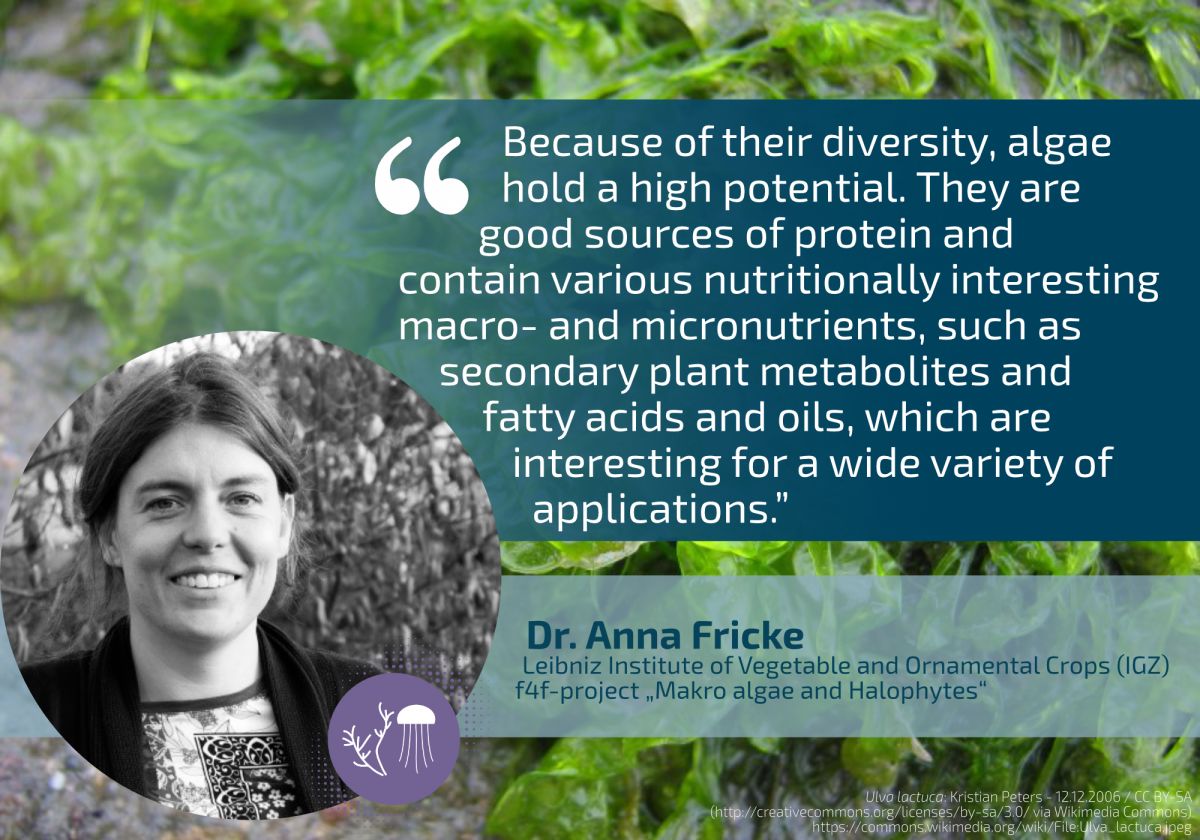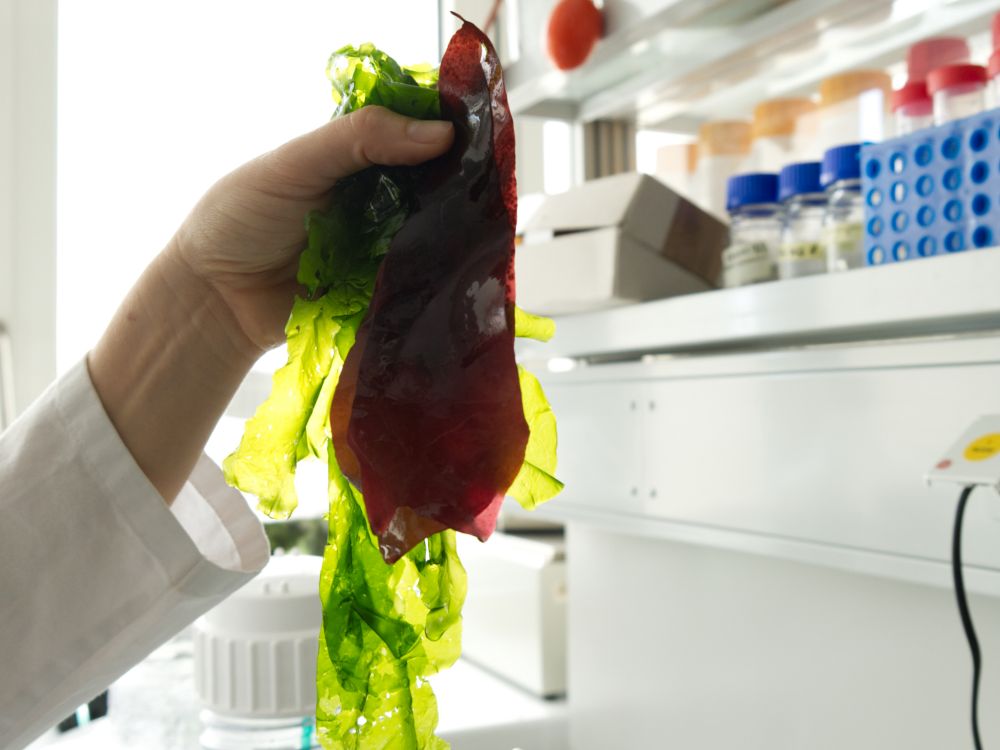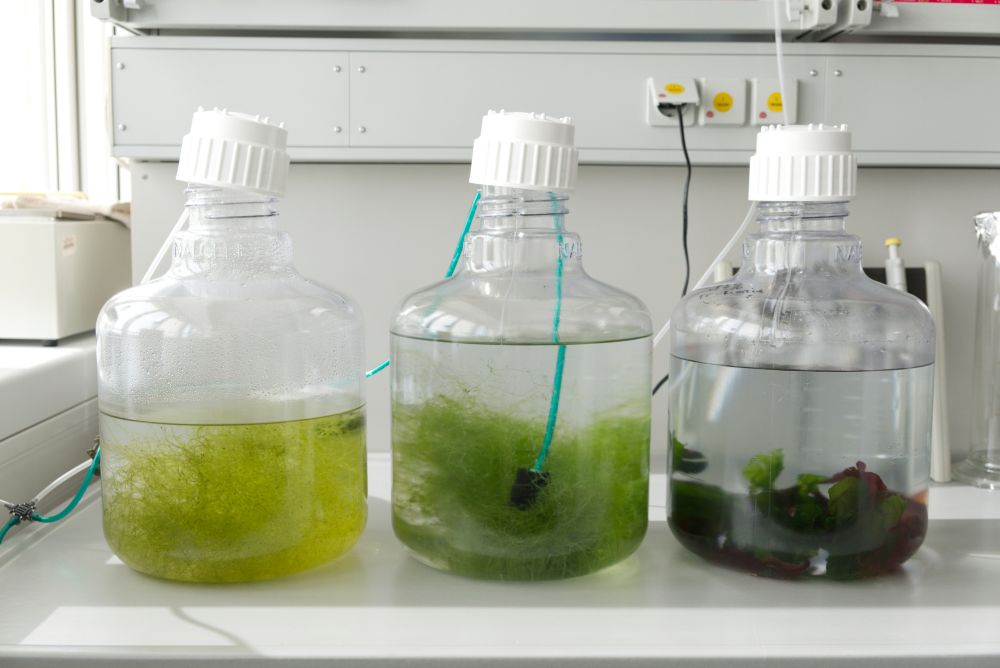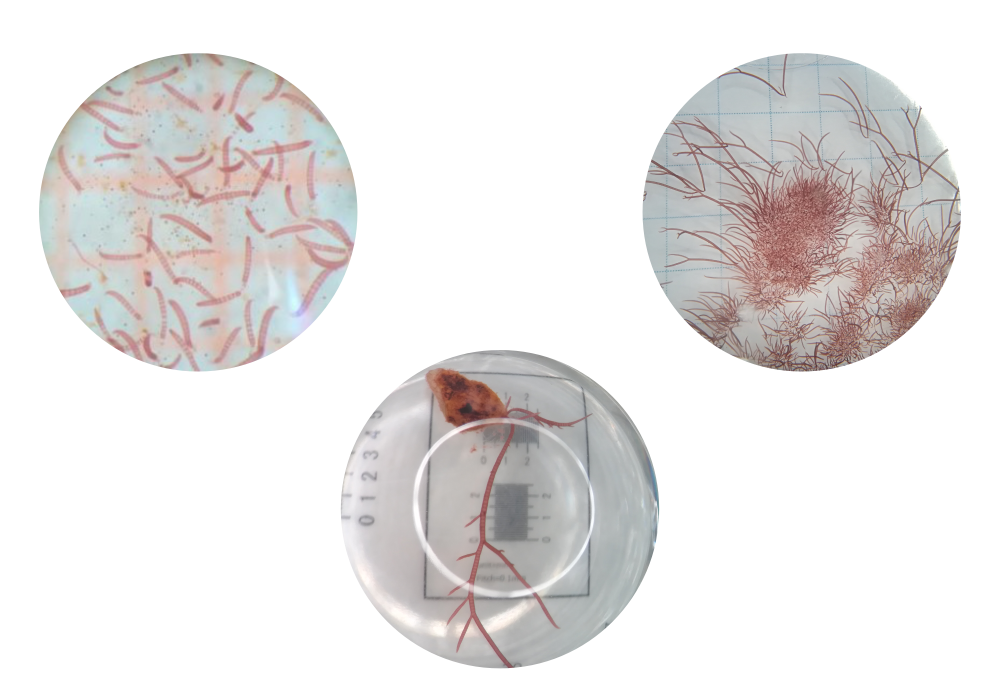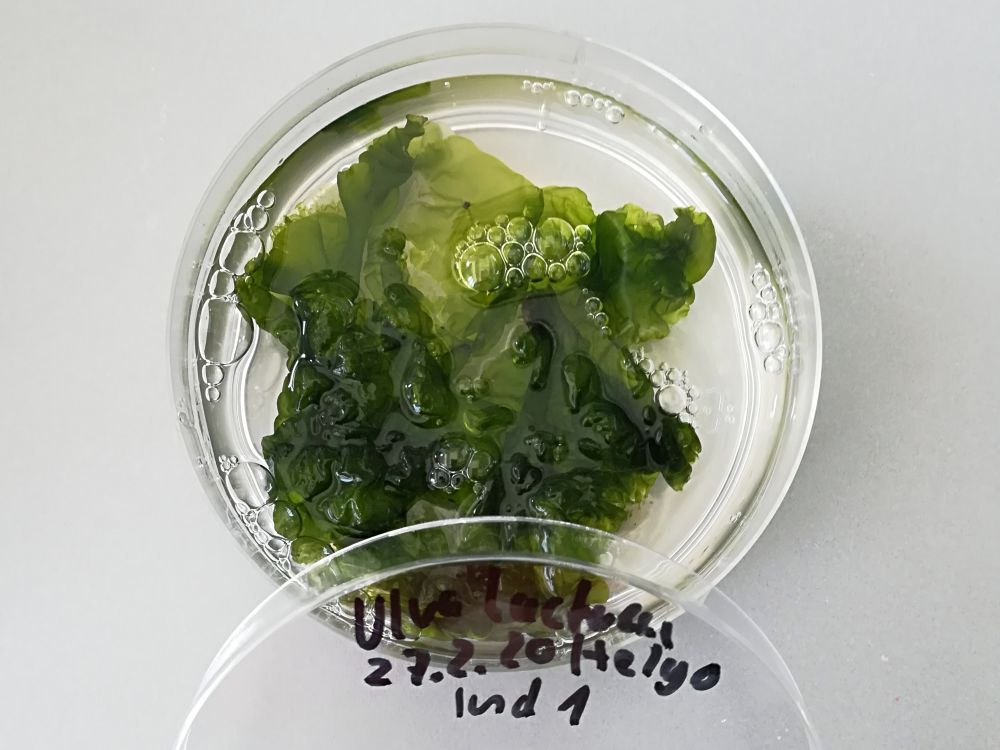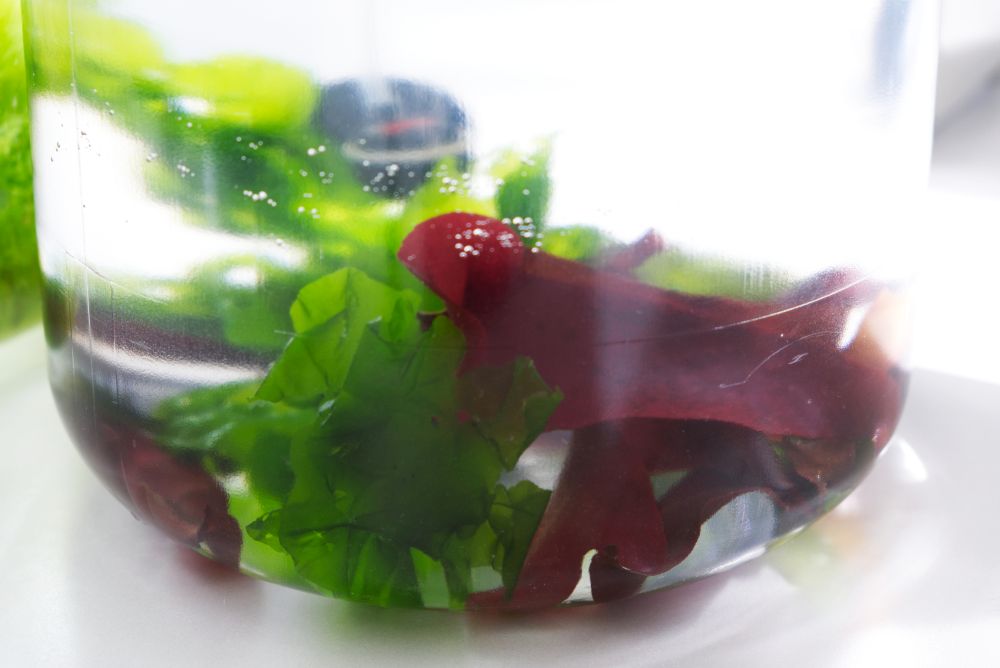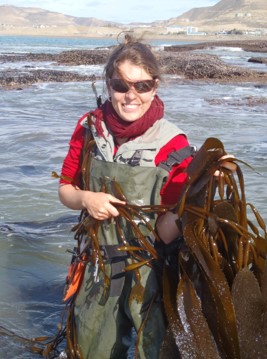How do you approach cultivating marine macro algae in closed systems?
We start with the selection of species, which is not trivial. Not all species of macro algae are suitable for every environment. We also have to take into account that the resources are freely and easily available – after all, in the long-term we want macro algae to be used in food production. So far, many species have been licensed or are being produced abroad. And this is where we run into problems with the Biodiversity Directive, the Nagoya Protocol3, which is designed to prevent the exploitation of other countries' biodiversity. So we mainly focus on native species such as Ulva lactuca, commonly known as sea lettuce, which is found in the North Sea.
After selection, the field material must be cultivated in the laboratory and cleaned of the flora and fauna attached to it. The algae are made to sporulate so that a unialgal culture can be grown from a single cell. If you have bad luck, the algae will germinate, but will not grow further under laboratory conditions. In nature, algae grow together with other organisms and microorganisms. As some bacteria are even necessary for the morphogenesis, i.e. form of the algae, algae cultures cannot simply be sterilized.
In the project, we now have various types of algae in unialgal culture, and "clean" enough that we can continue working with them. We are now testing whether they are suitable for cultivation in closed systems and in co-culture – in addition to already known species, we have also selected high-risk species that have not yet been investigated in artificial systems. We are now looking at metabolites and how the algae's composition changes under different conditions – e.g. through irradiation with UV light – and how we can optimize that composition for human nutrition.
We then analyse this by means of a modern analytical platform. In our experiments, we investigate what kind of triggers lead to an accumulation of certain metabolites. We focus on pigments, proteins, fatty acids as well as other metabolites. So far, algae material from the field has been examined for its chemical composition. Not all metabolites can always be reconstructed under artifical conditions, since not all relevant biological influences that the algae experience in the course of their life cycle up to the point of sampling can be determined. We therefore now systematically investigate this under defined conditions.
And then we face the challenge of bringing the selected macro algae into co-culture with the other food4future organisms - halophytes (IGZ), medusae (ZMT) and crickets (ATB). Here, it is important to find a compromise regarding their growth parameters. Which salt concentrations can be tolerated, which lighting conditions? In regard to stability, co-cultures have an advantage over monocultures, and are more future-oriented. In natural ecosystems there is a fine balance between species. The difficulty for artificial systems is to choose the right partners for certain conditions, so that they do not compete for resources but benefit from each other. At IGZ, we have already started with algae and halophytes, but a lot still need to be tested. Ultimately, we want to establish a sustainable system that makes sense in terms of energy and that optimally uses the resources water and nutrients.
